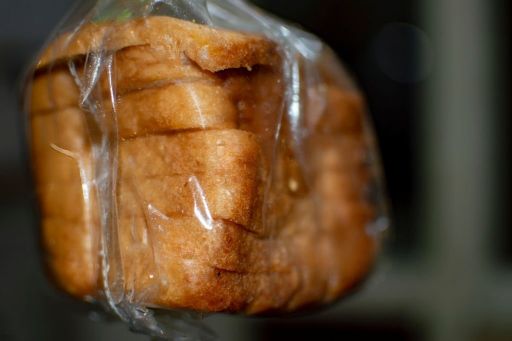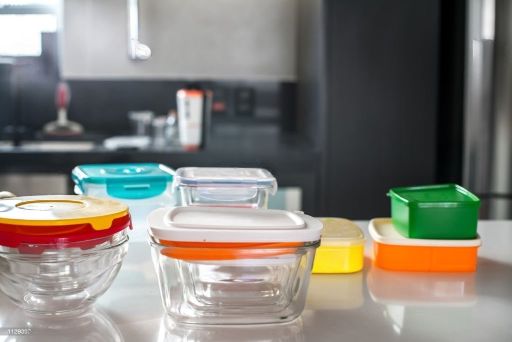Have you ever wondered, “Why is my bread molding so fast?” It’s a common dilemma that can leave you frustrated, but fear not!
I’m here to shed light on this issue and provide you with valuable tips to keep your bread fresher for longer.
In this article, I’ll reveal the reasons behind the quick molding of bread and provide you with practical tips on how to keep bread from molding.
So, Let’s dive in.
Why Is My Bread Molding So Fast – Revealed
Bread molding faster than usual can be attributed to various factors. Let’s explore the 5 common reasons behind this issue:
1. Low-Quality Ingredients
When you use ingredients of inferior quality to make bread, you inadvertently elevate the risk of rapid mold formation.
Low-quality flours possess elevated moisture content, thereby rendering your bread more prone to mold growth.
Moreover, the inclusion of additives and preservatives in such flour can negatively impact the overall freshness of the bread.
These compounds may interact with the dough’s composition, potentially accelerating the mold development process.
2. Inadequate Packaging
The choice of packaging for your bread plays a crucial role in determining its susceptibility to mold.

Bread stored in open or poorly sealed bags is left exposed to ambient moisture and mold spores.
Opting for airtight packaging, on the other hand, acts as a barrier, substantially mitigating these risks.
By creating a sealed environment, you hinder the intrusion of moisture and mold, thereby extending the bread’s shelf life.
3. Contaminated Kitchen Environment
The cleanliness of your kitchen environment significantly influences the potential for mold growth on your bread.
A kitchen that is not routinely cleaned harbors dirt and contaminants that can introduce mold spores to the bread-making process.
Consistently maintaining hygienic conditions by thoroughly cleaning kitchen surfaces, utensils, and equipment can substantially reduce the likelihood of mold contamination.
This precautionary measure prevents the introduction of mold sources into your bread production area.
4. High Ambient Humidity
Residing in a region with a high level of humidity poses a unique challenge in preserving bread freshness.
Elevated humidity levels in the surrounding air contribute to increased overall moisture content, which can easily transfer to your bread and create an environment conducive to mold growth.
The excess moisture provides a breeding ground for mold spores, accelerating their development.
To counteract this, it becomes essential to implement strategies that control humidity levels and protect the bread from excessive moisture exposure.
5. Lack of Proper Ventilation
Proper ventilation within your kitchen is pivotal in maintaining an environment that discourages mold formation.
Inadequate ventilation traps moisture, generating a setting that fosters mold growth.
Ensuring effective airflow and ventilation mechanisms in your kitchen helps mitigate excess humidity, thereby maintaining a drier atmosphere that inhibits mold proliferation.
Adequate ventilation not only prevents the buildup of moisture but also supports the overall preservation of bread quality.
How to Keep Bread from Molding? 13 Easy Ways
Keeping bread from molding involves a combination of proper storage, handling, and sometimes using additives.
Here are some effective ways to help you keep your bread from molding:
1. Choose the Right Storage Location
The initial step in effectively preventing bread from molding involves strategically selecting an appropriate storage location.
It’s crucial to avoid areas with high humidity, as excessive moisture provides an ideal environment for mold to thrive.
Instead, opt for a storage spot that is cool and dry, such as a dedicated breadbox or a well-ventilated pantry.
By placing your bread in a low-humidity setting, you create an unfavorable condition for mold growth to occur.
2. Opt for Bread Boxes or Airtight Bins
Bread boxes and airtight bins are exceptional choices when it comes to safeguarding your bread from mold.
These containers offer a controlled environment that plays a significant role in maintaining the optimal level of moisture while simultaneously preventing the accumulation of excess humidity.
This controlled atmosphere substantially extends the overall freshness of your bread, ensuring that it remains delectable for a more extended period.
3. Utilize a Bread Drawer
If your kitchen is equipped with a dedicated bread drawer, it’s a prudent decision to leverage this feature for bread storage.
Bread drawers are ingeniously designed to facilitate proper air circulation, thus promoting an even distribution of air around the stored bread.
This, in combination with maintaining a consistent temperature, acts as a potent deterrent against mold growth.
By storing your bread in a bread drawer, you’re essentially creating an environment where mold is less likely to develop.
4. Wrap in Beeswax Wraps
For an environmentally-conscious approach to bread storage, consider utilizing beeswax wraps.
These wraps offer a sustainable and effective means of preserving your bread’s freshness.
Beeswax wraps function by forming a breathable barrier that effectively repels moisture while simultaneously permitting the bread to maintain its desired level of freshness.
By employing this method, you’re adopting a proactive stance against mold formation.
5. Freeze for Long-Term Storage
To ensure your bread remains fresh over an extended duration, adopting a freezing strategy can prove highly effective.

Prior to freezing, you should slice the bread, allowing you to conveniently retrieve individual slices as needed without thawing the entire loaf.
For optimal results, make use of an airtight freezer bag to thwart the occurrence of freezer burn.
This method effectively puts mold growth on hold, allowing you to enjoy your bread over an extended period.
6. Vacuum-Seal for Freshness
Investing in a vacuum sealer presents a transformative solution for preserving the freshness of your bread.
Vacuum-sealed bags function by eliminating excess air, thereby creating an environment that is unfavorable for mold proliferation.
This technique acts as a potent deterrent against mold development, significantly prolonging the shelf life of your bread.
By embracing vacuum-sealing technology, you’re taking a proactive step toward maintaining mold-free bread for an extended duration.
7. Store Upside Down
An intriguing technique to enhance bread preservation involves storing it upside down.
By placing the bread with its bottom side facing up, you create a barrier that impedes the accumulation of moisture on the bread’s surface.
This simple adjustment effectively reduces the likelihood of mold development, ensuring your bread stays fresher for longer.
8. Avoid Storing in the Fridge
While the act of refrigerating bread can indeed slow down the growth of mold, it is important to note that this method comes with a trade-off.

The cold and arid conditions within a refrigerator can expedite the staling process of bread.
This phenomenon occurs due to the refrigerated environment’s tendency to draw moisture out of the bread, resulting in a less palatable texture and taste.
Thus, while refrigeration may extend mold-free periods, it compromises the overall quality of the bread.
9. Keep Bread Away from Sunlight
Safeguarding your bread from direct sunlight is vital in preventing unfavorable circumstances that promote mold proliferation.

Sunlight’s heat can elevate the temperature of the bread, creating an environment conducive to mold growth.
Therefore, you should store your bread in areas that are shielded from sunlight, such as avoiding placement near windows or sunlit spots.
10. Maintain Clean Storage Containers
Maintaining cleanliness and dryness in your bread storage containers is paramount in averting the buildup of potential mold contributors.

The accumulation of crumbs and residual moisture can act as attractants for mold development.
By consistently cleaning and thoroughly drying your storage containers, you eliminate these elements that encourage mold growth, thus enhancing the longevity of your bread’s freshness.
11. Use Bread Clips or Ties
Opting for the utilization of specialized bread clips or ties when sealing the bread bag serves as an effective means of preserving bread quality.
These closures provide a secure seal that significantly reduces the bread’s exposure to air.
By minimizing air contact, you create an environment that inhibits moisture accumulation and thus aids in maintaining the bread’s optimal freshness.
12. Consider Clay Bread Bins
The utilization of clay bread bins offers a multifaceted approach to bread preservation.
These purpose-built containers possess the capacity to absorb excess moisture, consequently impeding the conditions favorable for mold growth.
Additionally, clay bread bins facilitate adequate air circulation within the container, ensuring that the bread maintains its freshness over an extended period.
13. Utilize Parchment Paper
Employing parchment paper as an intermediary layer for your bread storage holds multiple advantages.
The parchment paper envelops the bread in a manner that promotes gentle breathability, allowing the bread to remain aerated while concurrently acting as a barrier against excessive moisture.
This thoughtful approach to bread storage aids in preventing mold formation while preserving the bread’s desired texture and taste.
What Makes Bread Mold Faster?
Bread molds faster when exposed to favorable conditions for fungal growth.

These conditions include moisture, warmth, and oxygen. Moisture encourages mold spores to germinate and grow, while warmth accelerates their metabolic processes.
Oxygen supports aerobic respiration, providing energy for rapid multiplication.
Additionally, the presence of nutrients in bread, such as carbohydrates, further fuels mold growth. Mold spores are ubiquitous in the environment, and they readily settle on exposed surfaces like bread.
Therefore, keeping bread in a humid or warm environment, or failing to store it properly in airtight containers, increases the likelihood of mold development.
To prevent rapid mold growth, store bread in a cool, dry, and well-sealed container, extending its shelf life.
Does Bread Mold Faster in the Fridge?
Bread typically molds slower when stored in the fridge due to the colder temperatures and reduced moisture.
Refrigeration can extend its shelf life by inhibiting mold growth. However, the downside is that refrigeration can also accelerate the staling process, making the bread dry and less appetizing.
For best results, store bread in a cool, dry place or freeze it if not consumed within a few days.
Why Is My Bread Molding So Fast – Conclusion
In conclusion, the rapid molding of bread can be attributed to a combination of factors, including the use of low-quality ingredients, inadequate packaging, a contaminated kitchen environment, high ambient humidity, and a lack of proper ventilation.
However, by implementing a range of practical strategies, outlined in this article you can significantly extend the freshness of your bread and minimize the risk of mold growth.
Remember to choose the right storage container, freeze when necessary, and adopt good hygiene practices.
With these guidelines, you’ll no longer have to wonder, “Why is my bread molding so fast?” Instead, you’ll savor every slice of your freshly preserved bread.

